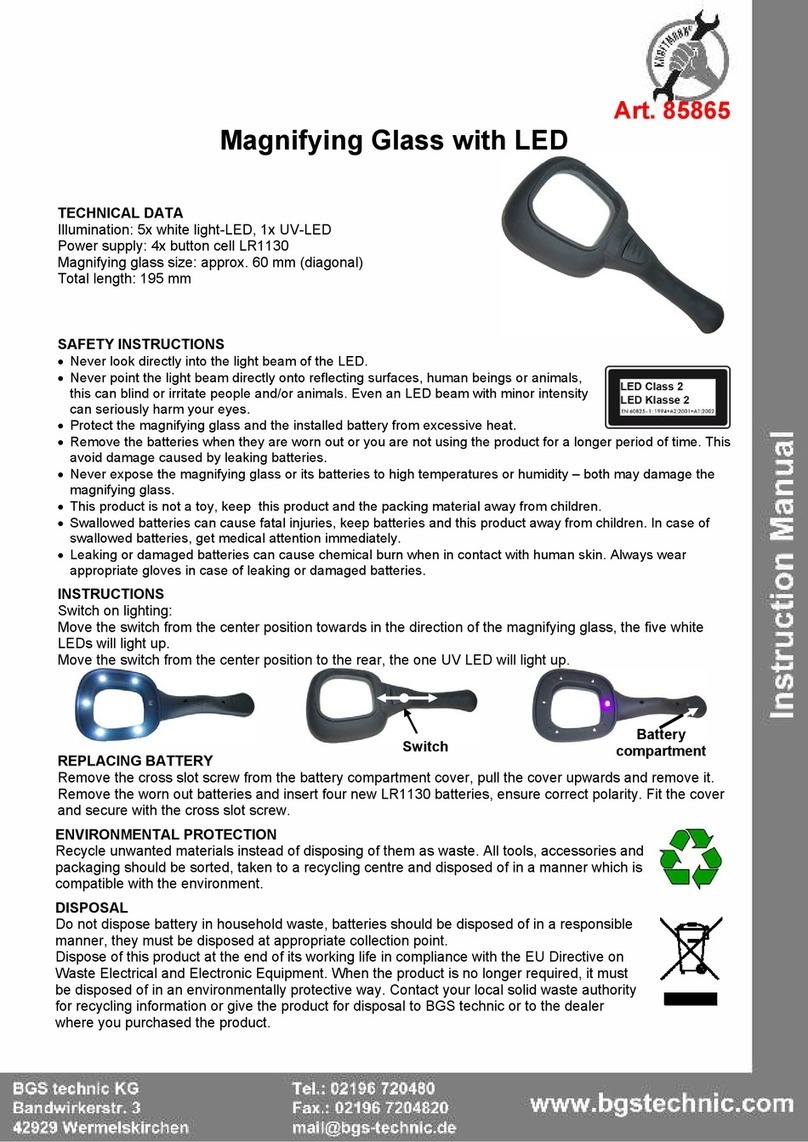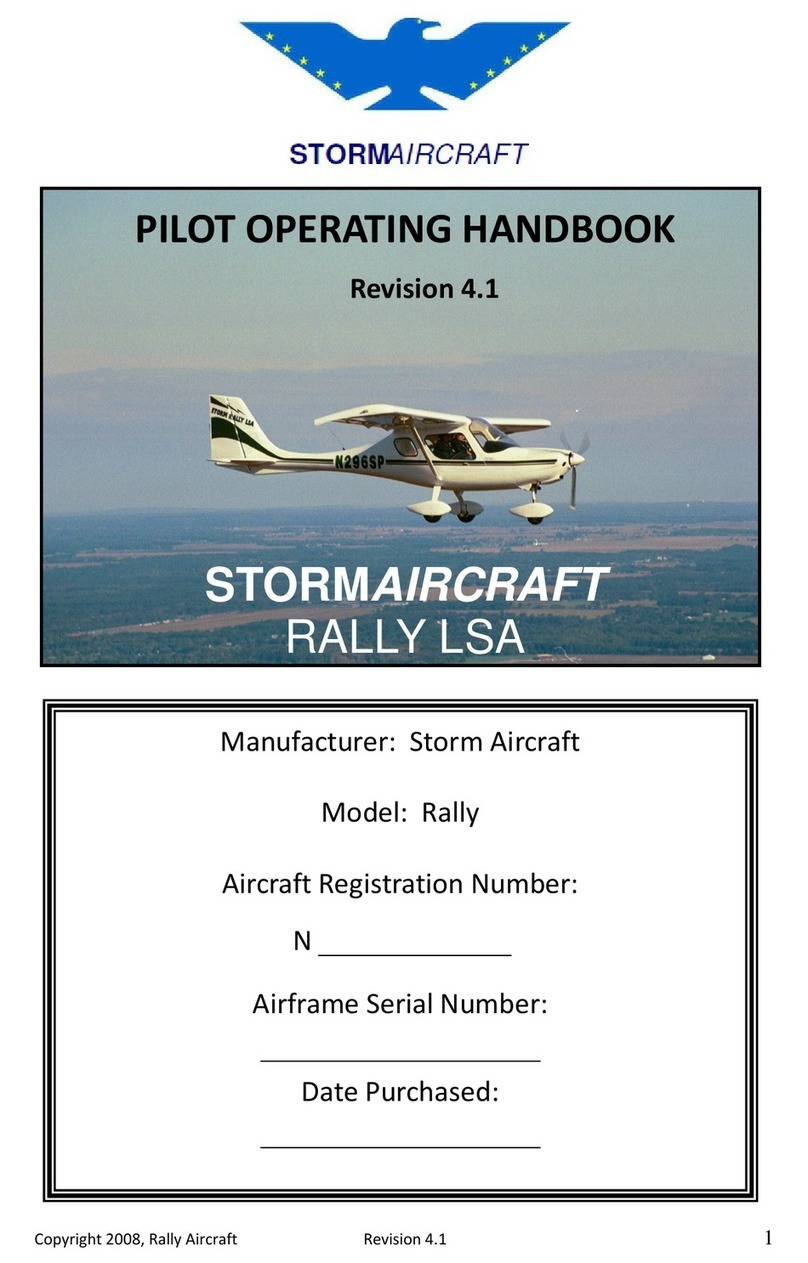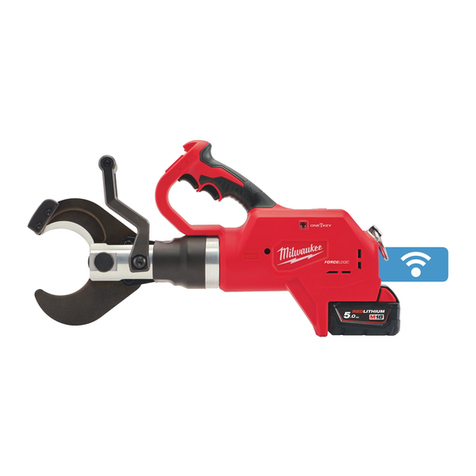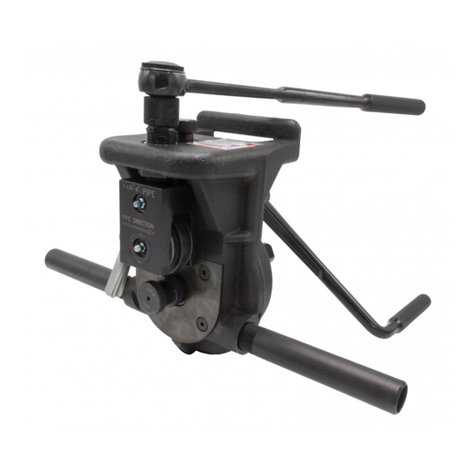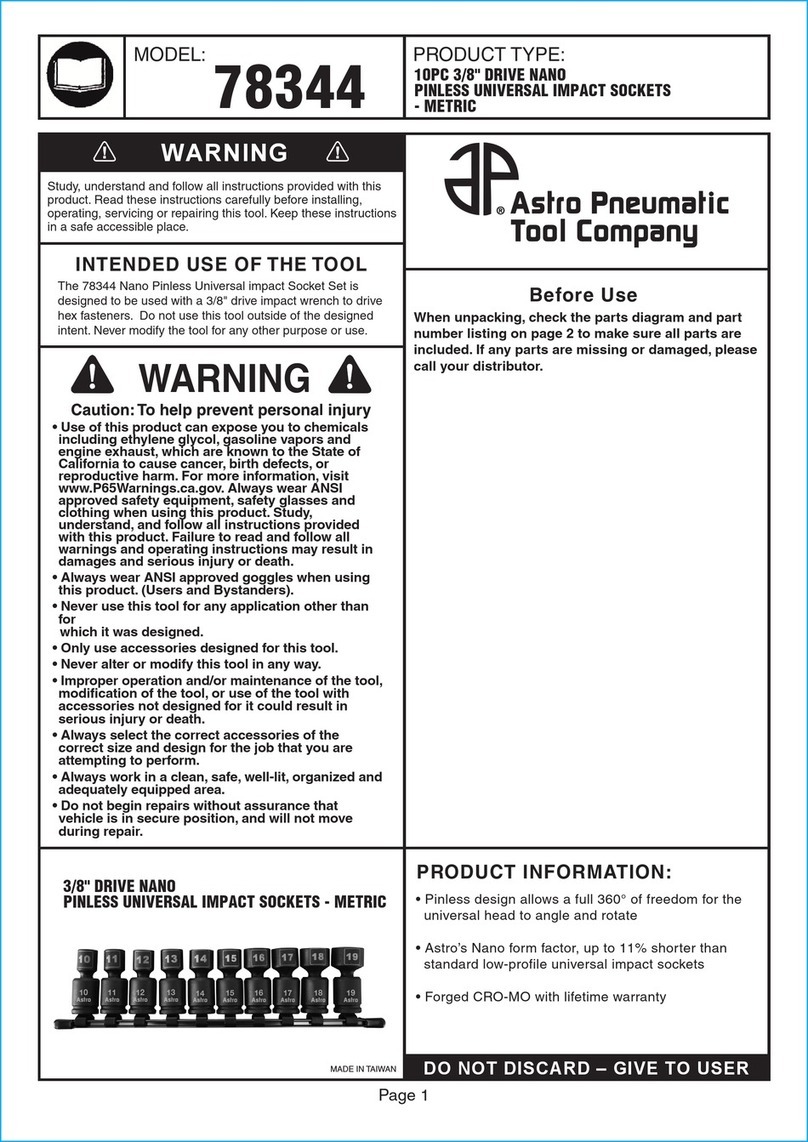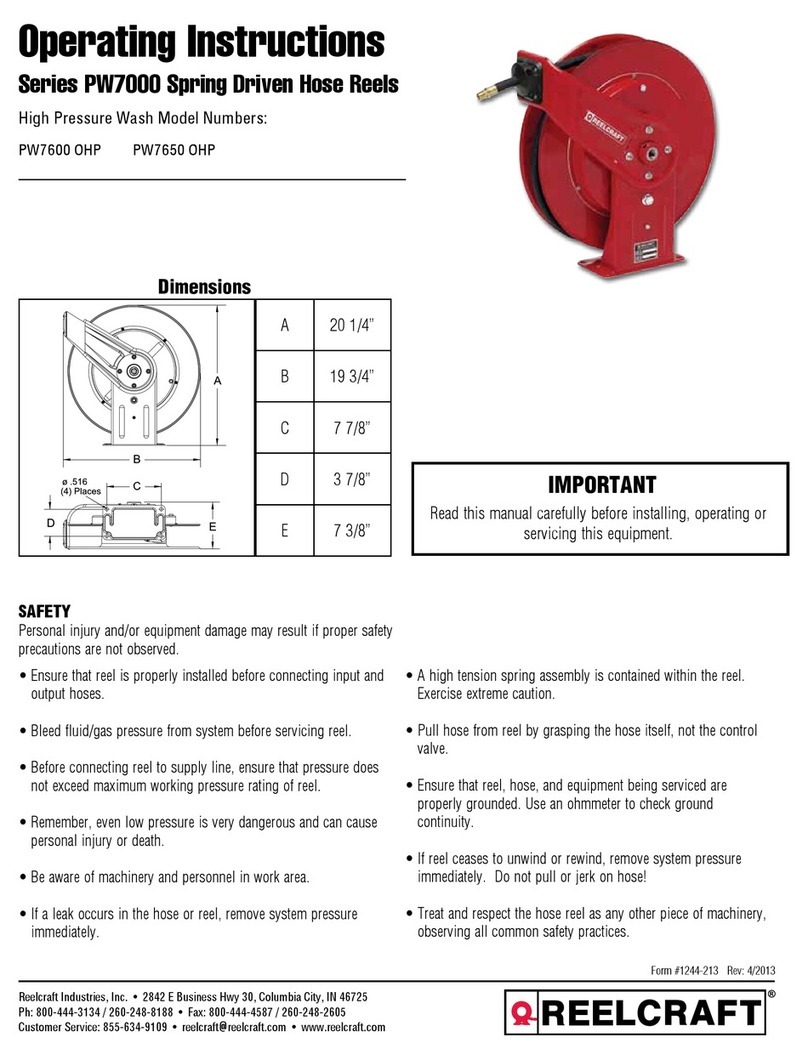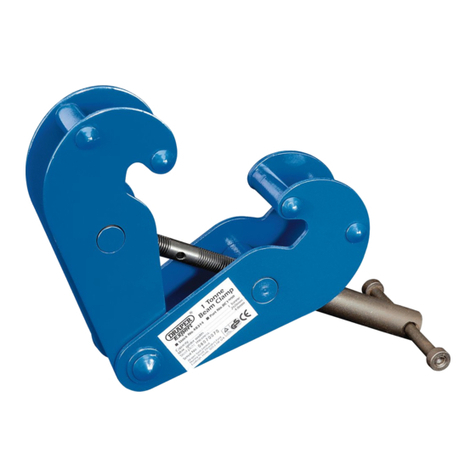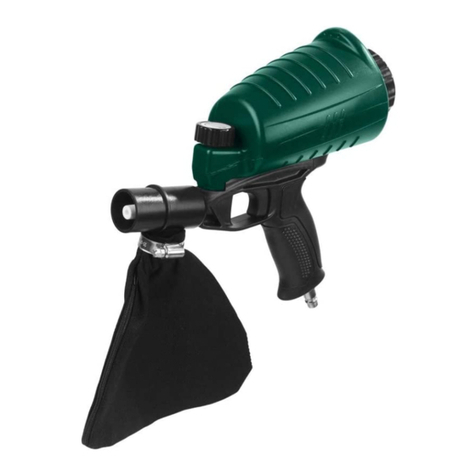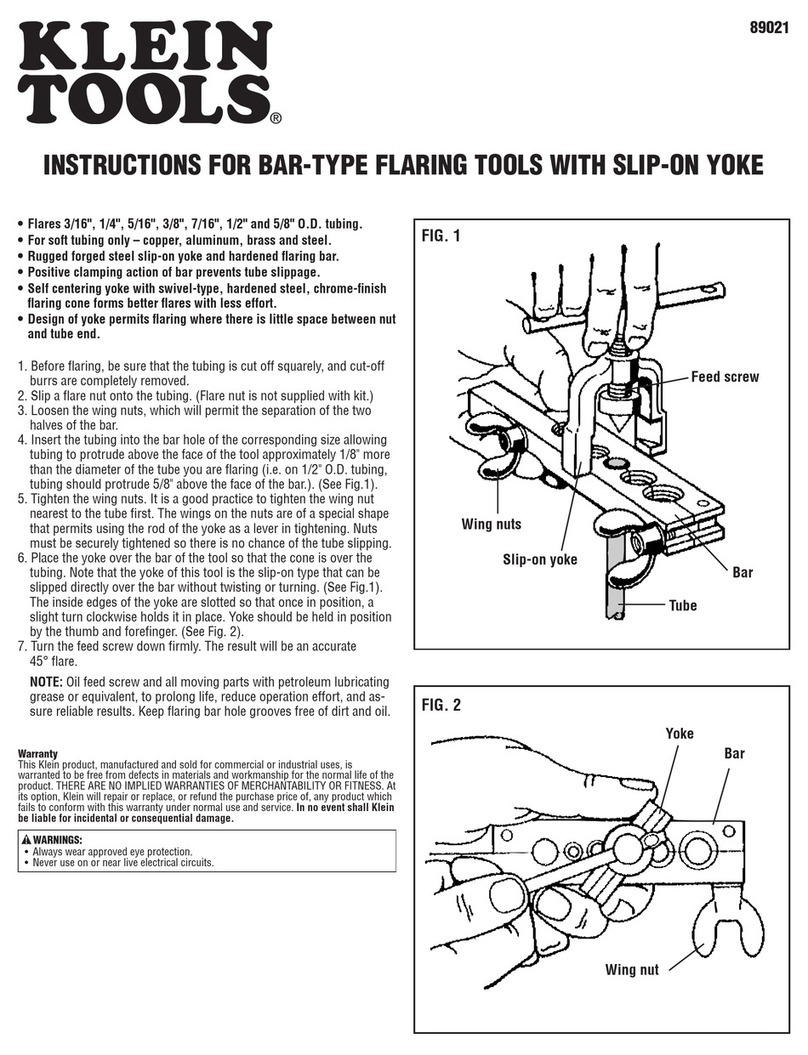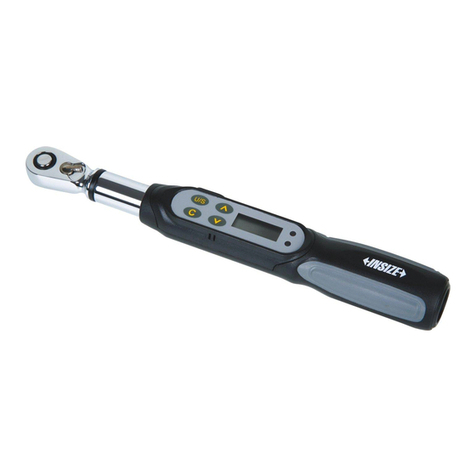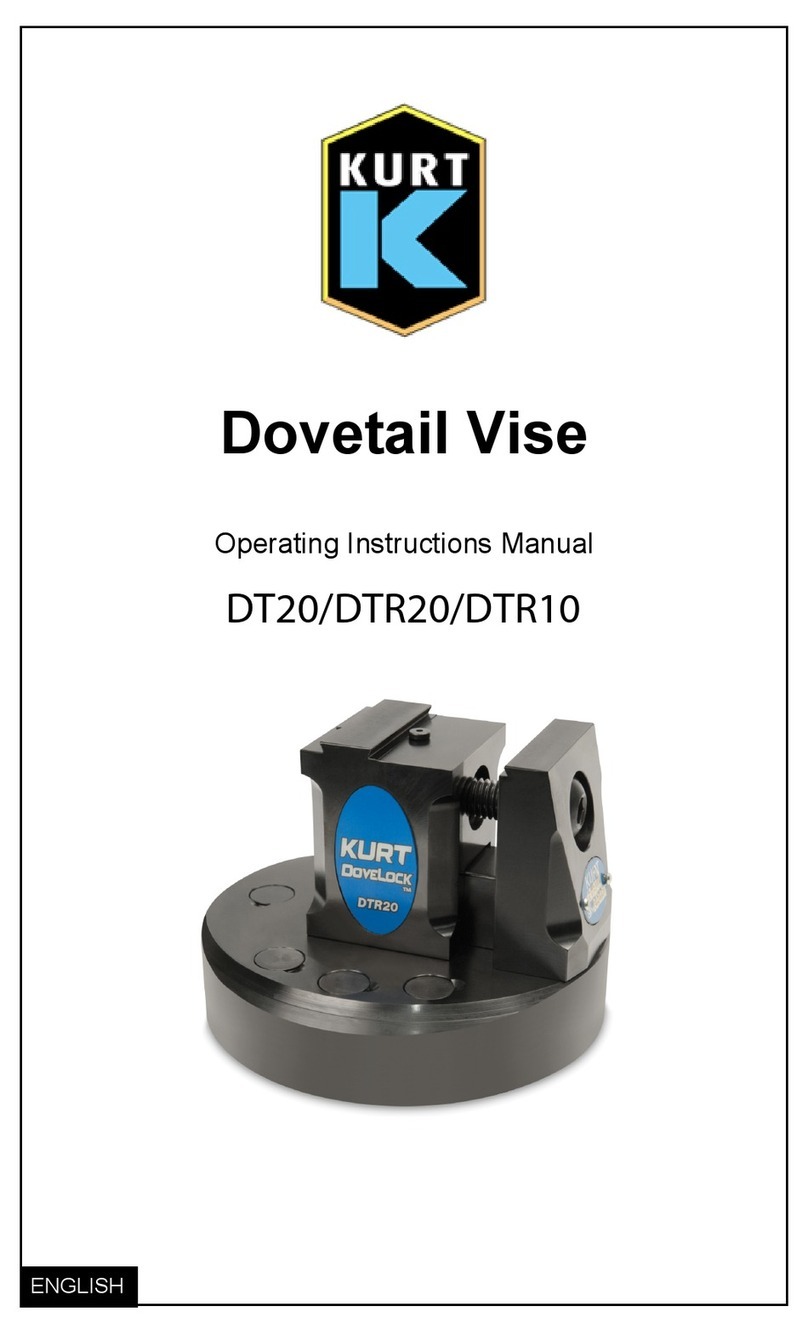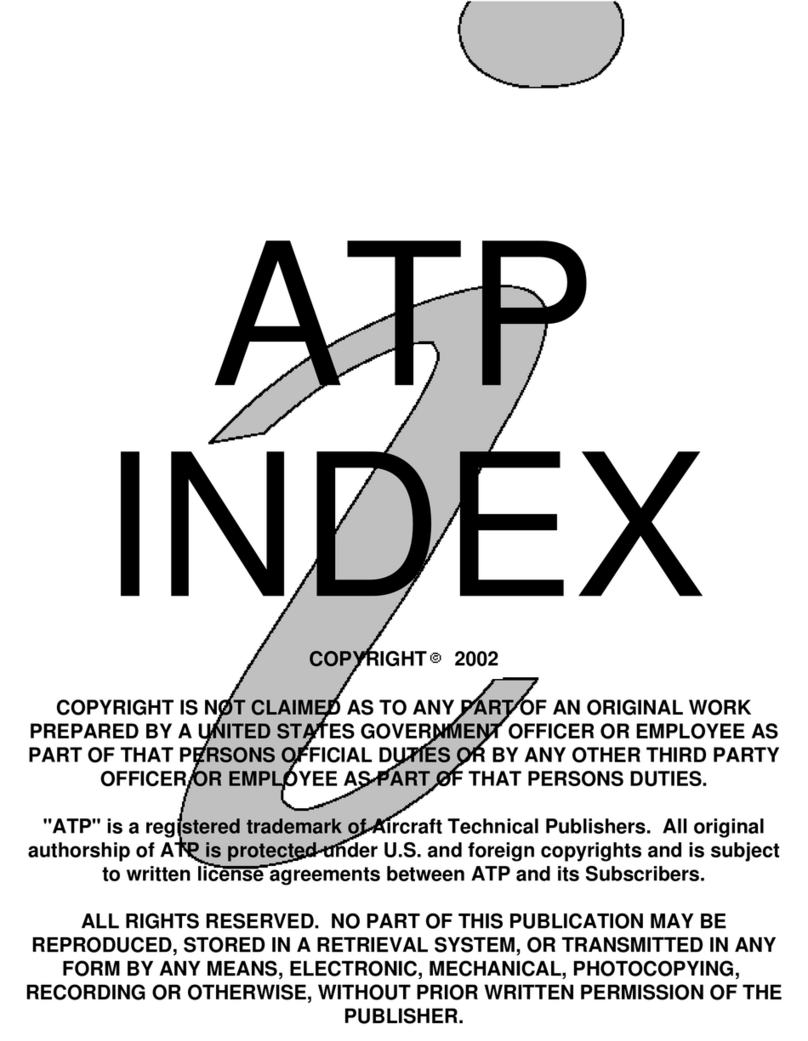Sicomat R422 User manual

MODELS: R422
AVVOLGITUBO AUTOMATICI ENROULEURS AUTOMATIQUES
AUTOMATISCHE SCHLAUCHAUFROLLER
AUTOMATIC HOSE REELS
MANUALE USO E MANUTENZIONE
USE AND MAINTENANCE MANUAL
NOTICE D'UTILISATION ET D'ENTRETIEN
GEBRAUCHSANWEISUNG
14
SICOMAT s.r.l.
Via Bologna, 10/D - Mondovì (CN) - ITALY
Tel. (+39) 0174.47.780 - Fax: (+39) 0174.47.975

........................... INDICE DEGLI ARGOMENTI ...............................
1 INFORMAZIONI GENERALI..................................................................................................... pag. 3
2 GARANZIA................................................................................................................................ pag. 3
3 DESCRIZIONE ......................................................................................................................... pag. 3
4 FUNZIONAMENTO................................................................................................................... pag. 3
5 USO PREVISTO DELLA MACCHINA....................................................................................... pag. 4
6 TARGATURA E DATI IDENTIFICATIVI..................................................................................... pag. 4
7 MONTAGGIO DEL TUBO ......................................................................................................... pag. 5
8 INSTALLAZIONE ...................................................................................................................... pag. 6
9 ALLACCIAMENTO.................................................................................................................... pag. 6
10 MANUTENZIONE ..................................................................................................................... pag. 7
11 SOSTITUZIONE DEL TUBO..................................................................................................... pag. 7
12 SOSTITUZIONE DELLA MOLLA .............................................................................................. pag. 8
13 SMALTIMENTO MATERIALE INQUINANTE ............................................................................ pag. 9
14 DICHIARAZIONE DI CONFORMITA' CE.................................................................................. pag. 9
Allegati:
15 PARTI DI RICAMBIO .............................................................................................................. pag. 32
16 DATI TECNICI......................................................................................................................... pag. 35
........................... INDEX DES ARGUMENTS ...................................
1 NORMES GENERALES APPLIQUEES................................................................................. page 17
2 GARANTIE............................................................................................................................. page 17
3 DESCRIPTION ...................................................................................................................... page 17
4 FONCTIONNEMENT ............................................................................................................. page 17
5 UTILISATION PRÉVUE DE LA MACHINE............................................................................. page 18
6 ÉTIQUETAGE ET IDENTITÉ ................................................................................................. page 18
7 MONTAGE DU TUYAU .......................................................................................................... page 19
8 INSTALLATION...................................................................................................................... page 19
9 BRANCHEMENT ................................................................................................................... page 20
10 ENTRETIEN........................................................................................................................... page 21
11 REMPLACEMENT DU TUYAU .............................................................................................. page 21
12 REMPLACEMENT DU RESSORT......................................................................................... page 22
13 ELIMINATION DU MATERIEL POLLUE ................................................................................ page 23
14 DECLARATION DE CONFORMITE CE................................................................................. page 23
Annexes:
15 PIECES DETACHEES ........................................................................................................... page 32
16 FICHES TECHNIQUES ......................................................................................................... page 35
1 GENERAL RULES APPLIED ................................................................................................. page 10
2 WARRANTY........................................................................................................................... page 10
3 DESCRIPTION ...................................................................................................................... page 10
4 OPERATION .......................................................................................................................... page 10
5 INTENDED USE OF THE MACHINE......................................................................................page 11
6 MARKING AND IDENTIFICATION..........................................................................................page 11
7 MOUNTING OF THE HOSE .................................................................................................. page 12
8 INSTALLATION...................................................................................................................... page 13
9 LINK ....................................................................................................................................... page 13
10 MAINTENANCE..................................................................................................................... page 14
11 REPLACEMENT OF THE HOSE........................................................................................... page 14
12 REPLACEMENT OF THE SPRING ....................................................................................... page 15
13 DISPOSING OF CONTAMINATED MATERIALS................................................................... page 16
14 DECLARATION OF CE CONFORMITY................................................................................. page 16
Enclosures:
15 SPARE PARTS ...................................................................................................................... page 32
16 TECHNICAL DATA................................................................................................................. page 35
............................ INDEX OF SUBJECT MATTERS ........................
............................. INHALTSVERZEICHNIS .....................................
1 ALLGEMEINE ANGEWENDETE NORMEN ...........................................................................seite 24
2 GARANTIE..............................................................................................................................seite 24
3 BESCHREIBUNG ...................................................................................................................seite 24
4 OPERATION ...........................................................................................................................seite 24
5 VERWENDUNGSZWECK DER MASCHINE..........................................................................seite 25
6 PLAQUE UND IDENTIFIZIERUNG ........................................................................................seite 25
7 MONTAGE DES SCHLAUCHES ............................................................................................seite 26
8 INSTALLATION.......................................................................................................................seite 27
9 ANSCHLUSS ..........................................................................................................................seite 27
10 WARTUNG..............................................................................................................................seite 28
11 AUSWECHSLUNG DES SCHLAUCHES ...............................................................................seite 28
12 AUSWECHSLUNG DER FEDER .......................................................................................... seite 29
13 ENTSORGUNG VON VERSEUCHTEM MATERIAL ..............................................................seite 30
14 KONFORMITATSERKLARUNG..............................................................................................seite 30
Beilage:
15 ERSATZTEILE ........................................................................................................................seite 32
16 TECHNISCHE DATEN............................................................................................................seite 35
- 2 -
IGBFD

Questo manuale ha lo scopo di dare informazioni sul corretto montaggio, uso e manutenzione
degli avvolgitubo in modo che non si possano vericare incidenti.
L'avvolgitubo è stato progettato in conformità alle attuali normative della Comunità Europea
e precisamente:
- UNI EN ISO 12100-1:2010 - UNI EN ISO 12100-2:2010 Sicurezza del macchinario - Con-
cetti fondamentali, principi generali di progettazione - Terminologia di base, metodologia
- UNI EN ISO 13857:2008 Sicurezza del macchinario: Distanze di sicurezza per impedire
il raggiungimento di zone pericolose con gli arti superiori e inferiori
1 - INFORMAZIONI GENERALI
Gli avvolgitubo modello R422 sono costruiti in lamiera d'acciaio zincata a caldo, stam-
pata e verniciata a polveri in poliestere per garantire una buona durata nel tempo.
Gli apparecchi riavvolgono automaticamente il tubo mediante una molla in acciaio di alta
qualità incorporata nel tamburo e permettono di arrestarlo alla lunghezza voluta tramite un
dispositivo automatico.
Gli avvolgitubo nella versione senza tubo sono forniti con la molla scarica. Seguire le
istruzioni descritte al capitolo "MONTAGGIO DEL TUBO".
3 - DESCRIZIONE
2 - GARANZIA
- 3 -
ITALIANO - Lingua originale
La macchina è garantita per un periodo di 18 mesi dalla data di fabbricazione e deve essere
usata nelle modalità descritte nel seguente manuale di utilizzo. Non sono coperte da garanzia
tutte le parti che dovessero risultare difettose a causa di mancata osservanza delle istruzioni
per il funzionamento, di errata installazione o manutenzione, di manutenzioni operate da
personale non autorizzato, di danni da trasporto, ovvero di circostanze che, comunque, non
si possono far risalire a difetti di fabbricazione. La Casa costruttrice declina ogni responsabi-
lità per eventuali danni che possono, direttamente o indirettamente, derivare a persone e/o
cose in conseguenza della mancata osservanza di tutte le prescrizioni indicate nel seguente
Manuale di Istruzioni e concernenti, specialmente, le avvertenze in tema di installazione, uso
e manutenzione dell’apparecchio.
I
4 - FUNZIONAMENTO
Il dispositivo automatico d'arresto del tubo funziona su un arco corrispondente a 1/2 giro
del tamburo. Per sbloccare il tubo esercitare una lieve trazione sul tubo stesso.
E' importante sempre trattenere il tubo durante il riavvolgimento per impe-
dire danni all'apparecchio, a persone o cose circostanti.

5 - USO PREVISTO DELLA MACCHINA
Gli avvolgitubo della serie verniciata sono adatti per distribuire aria compressa, olio,
grasso, acqua a bassa e ad alta temperatura.
Gli avvolgitubo inox sono adatti per il lavaggio con acqua calda ad alta o bassa
pressione. Non sono adatti per distribuire uido per processo alimentare ma solo
per diverse soluzioni di lavaggio. In rispetto alle normative comunitarie, non devono
essere posizionati in zone che possono venire a contatto con prodotti alimentari.
Tutti gli avvolgitubo devono essere utilizzati esclusivamente per la distribuzio-
ne di uidi alle pressioni e temperature indicate nelle tabelle (vedere allegati
in fondo al manuale). A ciascun modello corrisponde uno specico uido. Non
distribuire uidi diversi da quelli previsti.
Si declina ogni responsabilità per anomalie o pericolosità che derivano dal montaggio
di tubi con caratteristiche ed impieghi diversi da quelli descritti.
• Evitare di salire sulla macchina o appoggiarvici materiale di qualsiasi genere.
• Vericare periodicamente che l'avvolgitubo installato funzioni correttamente, che
non vi siano perdite di uido e che i raccordi siano ben serrati.
• E' vietato togliere lo sportello laterale durante l'utilizzo dell'avvolgitubo.
• Chiudere a ne turno l'alimentazione del uido per evitare danni durante le ore
non lavorative.
• L'avvolgitubo non può essere utilizzato in atmosfere potenzialmente esplo-
sive (ATEX).
6 - TARGATURA E DATI IDENTIFICATIVI
Si appone la Marcatura CE
quale costruttore delle attrez-
zature in oggetto.
Sull'attrezzatura esiste, s-
sata saldamente con sistema
adesivo polimerizzante una
targhetta sulla quale sono
indicati oltre al nominativo
della ditta costruttrice na-
le e il simbolo "CE", tutte le
notizie necessarie alla chiara
identicazione della macchi-
na (modello, utilizzo, anno di
costruzione, peso, ecc)
Anno di costruzione
e numero di serie
I
- 4 -
MONDOVÌ (CUNEO) ITALY
R422.015.010
18 bar 10x17 10 m
HOSE REEL for Air 40°C
AVVOLGITUBO Aria 40°C
20 kg
2014 S/N. 1120

7 - MONTAGGIO DEL TUBO (Modelli senza tubo)
7.1
I
7.3
7.2
7.5
7.4
7.6 7.7
7.1) Fissare l'avvolgitubo al banco.
Smontare lo sportello facendo leva con un cac-
ciavite.
7.2) Inserire il tubo attraverso i rullini di guida, colle-
garlo al raccordo nel tamburo e stringere con la
chiave adatta.
7.3) Montare il tampone di arresto a circa 50 cm
dall'estremità opposta del tubo.
7.4) Svitare le 2 viti del mozzo lato molla con una
chiave da 10 mm.
7.5) Inserire una chiave a brugola da 14 mm nel
foro esagonale del mozzo.
Ruotare la chiave in senso antiorario (+) e av-
volgere il tubo no a portare il tampone di arre-
sto a contatto con la bocchetta.
7.6) Precaricare la molla continuando a ruotare la
chiave di 1,5 giri in senso antiorario (+), tratte-
nere in posizione e bloccare con le 2 viti.
7.7) Srotolare e arrotolare interamente il tubo per
vericare il corretto funzionamento.
Se il tubo non rientra o non fuoriesce completa-
mente, aggiustare la tensione della molla.
Far scorrere il tampone di arresto alla distanza
voluta dall'estremità del tubo.
NON INSERIRE LE MANI ALL'INTERNO
DELL'AVVOLGITUBO!
7.8) Rimontare lo sportello.
Gli avvolgitubo nella versione senza tubo sono
forniti con la molla scarica.
Utilizzare un tubo che abbia caratteristiche dimen-
sionali e di pressione adatte all'impiego come de-
scritto nelle tabelle in base al codice dell'avvolgitubo.
- 5 -

- 6 -
8 - INSTALLAZIONE
Al ricevimento dell'avvolgitubo controllare l'imballo ed immagazzinare in luogo asciutto.
Controllare che la macchina non abbia subito danni durante il trasporto. Vericare quindi la
presenza di tutti i componenti e richiedere al costruttore eventuali pezzi mancanti.
L'avvolgitubo deve essere collocato a parete ad un'altezza minima dal pavimento di
2,50 m per evitare incidenti durante le operazioni di lavoro. Dato il peso e le dimensioni
dell'avvolgitore, la sua movimentazione richiede l'utilizzo di mezzi di sollevamento.
E' possibile il montaggio a pavimento o come accessorio su altre macchine se in posizione
protetta.
Le staffe di ancoraggio possono essere applicate in tre diverse posizioni sull'avvolgitubo in
modo che questo si possa installare nel modo desiderato (vedi gura A).
Montare l'avvolgitubo già completo di tubo su pareti rigide e consistenti impiegando 4 tasselli
diametro 10 mm. Il montaggio con la staffa girevole (optional) va eseguito impiegando 2
tasselli diametro 10 mm.
ATTENZIONE! La ditta costruttrice declina ogni responsabilità per danni a persone o
cose causate da un montaggio non corretto dell'avvolgitubo.
IMPORTANTE! Le operazioni di installazione devono essere eseguite da
personale opportunamente addestrato tenendo conto delle informazioni
date da questo manuale.
9 - ALLACCIAMENTO
Collegare sempre l'avvolgitubo alla linea mediante raccordi
e tubo essibile (A) con caratteristiche adatte all'impiego,
soprattutto nel caso di alta pressione e temperatura.
IMPORTANTE! Quando si fa il serraggio del raccordo, tratte-
nere con la chiave da 27 il giunto girevole (B) in modo da non
danneggiarlo. In questo modo si possono evitare conseguenti
perdite di uido dalla guarnizione interna (avvolgitubo per alta
pressione). In rispetto alle normative, sulla linea di alimenta-
zione all'avvolgitubo applicare un rubinetto a sfera in modo da
facilitare le operazioni di manutenzione e da utilizzare come
valvola di emergenza per situazioni pericolose.
I
A
optional

- 7 -
I
IMPORTANTE! Qualsiasi operazione di manutenzione deve essere eseguita
da personale opportunamente addestrato tenendo conto delle informazioni
date da questo manuale. Assicurarsi che la molla sia distesa senza carico
prima di iniziare operazioni all'interno dell'avvolgitubo.
Chiudere sempre l'alimentazione del uido all'apparecchio prima di eseguire qualsiasi ma-
nutenzione su di esso.
Sostituire il tubo essibile non appena presenta segni di usura o di deterioramento dovuto
alle diverse condizioni dell'ambiente in cui si lavora. Si consiglia la sostituzione ogni anno nel
caso sia usato poche ore alla settimana.
Sostituire la guarnizione di tenuta all'interno del giunto girevole se si vericano perdite per
usura. Qualsiasi sostituzione di pezzi costituenti l'avvolgitubo deve essere fatta utilizzando
ricambi originali (vedere tavole allegate in fondo al manuale).
Per qualsiasi anomalia e prima di procedere ad eventuali sostituzioni di pezzi si consiglia
di interpellare la casa costruttrice. Dopo ogni operazione di manutenzione ripristinare le
eventuali protezioni.
10 - MANUTENZIONE
11 - SOSTITUZIONE DEL TUBO
11.3
11.4
11.1
11.2
11.5
Sostituire il tubo con uno di uguali dimensioni e
caratteristiche.
11.1) Togliere il tampone di arresto in gomma e rila-
sciare il tubo lentamente in modo da scaricare
completamente la molla dell'avvolgitubo.
11.2) Svitare il giunto girevole.
11.3) Svitare le 2 viti del mozzo attacco molla con
una chiave da 10 mm.
11.4) Smontare le 4 viti di chiusura dei due semigu-
sci. Asportare il semiguscio e la bocchetta e
srotolare completamente il tubo dal tamburo.
11.5) Estrarre il tamburo, svitare il raccordo interno
con la chiave adatta e montare il nuovo tubo.
11.6) Rimontare l'avvolgitubo seguendo le ope-
razioni inverse. Ingrassare eventualmente i
supporti ed il nottolino.
Montare il tampone di arresto a circa 50 cm
dall'estremità opposta del tubo.
11.7) Procedere come previsto al punto 7.5 del
capitolo: Montaggio del tubo.
ATTENZIONE! Per ragioni di sicurezza
è necessario eseguire le operazioni di
sostituzione del tubo al banco.
NON INSERIRE LE
MANI O ALTRI OG-
GETTI ALL'INTERNO
DEL TAMBURO!

- 8 -
12 - SOSTITUZIONE DELLA MOLLA
La molla che permette il rientro del tubo è collocata all'interno di un apposito carter che è
solidale al tamburo.
ATTENZIONE! Lo smontaggio della molla è consentito soltanto a personale
autorizzato ed opportunamente addestrato dalla ditta costruttrice. Maneggiare
con molta attenzione le molle; potrebbero vericarsi gravi incidenti.
12.4 12.5
12.6 12.7
12.7
12.1) Togliere il tampone di
arresto e far rientrare
lentamente il tubo all'in-
terno dell'avvolgitubo
in modo da scaricare
completamente la molla.
12.2) Svitare il giunto girevole.
12.3) Svitare le 2 viti del moz-
zo attacco molla con
una chiave da 10.
12.4) Smontare le 4 viti di
chiusura dei due semi-
gusci. Asportare il semi-
guscio e la bocchetta ed
estrarre il tamburo.
12.5) Estrarre il mozzo dal
carter portamolla.
12.6) Sollevare le linguette sul
tamburo con un caccia-
vite e far ruotare il carter
portamolla in modo da
svincolarlo dal tamburo.
12.7) Capovolgere il tambu-
ro ed estrarre il pacco
molla facendo molta
attenzione che la molla
non fuoriesca dal carter.
12.8) Inserire ed agganciare
il mozzo nel nuovo pac-
co molla. Ingrassare la
molla ed il mozzo.
12.9) Mettere in piedi il tam-
buro ed inserire il nuovo
pacco molla con molta
attenzione. Bloccare le
linguette.
12.10) Assemblare l'avvolgitu-
bo e caricare la molla
come previsto al punto
7.2 del capitolo: Mon-
taggio del tubo
12.1
12.9
I
12.2
12.3

- 9 -
I
14 - DICHIARAZIONE DI CONFORMITA' CE
Il fabbricante:
SICOMAT s.r.l.
Via Bologna, 10/D - Mondovì (CN) - ITALY
Tel. (+39) 0174.47.780 - Fax: (+39) 0174.47.975
dichiara sotto la propria esclusiva responsabilità che gli avvolgitubo automatici modello
R422
serie: riferirsi al Serial Number (S.N.) riportato sull’etichetta apposta sul prodotto
anno di costruzione: riferirsi all’anno di produzione riportato sull’etichetta apposta sul prodotto
sono conformi alla Direttiva macchine 2006/42/CE
Inoltre sono state applicate le seguenti norme armonizzate:
- UNI EN ISO 12100-1:2010 - UNI EN ISO 12100-2:2010 Sicurezza del macchinario -
Concetti fondamentali, principi generali di progettazione
- UNI EN 13857:2008 Sicurezza del macchinario - Distanze di sicurezza per impedire il
raggiungimento di zone pericolose con gli arti superiori e inferiori
La persona autorizzata a costituire il fascicolo tecnico è il Sig. Carlo Denegri in qualità di
titolare dell’azienda.
13 - SMALTIMENTO DEL MATERIALE INQUINANTE
In caso di manutenzione o demolizione della macchina, le parti di cui è composto devono
essere afdate a ditte specializzate nello smaltimento e riciclaggio dei riuti industriali e, in
particolare:
SMALTIMENTO DELL’IMBALLAGGIO:
L’imballaggio è costituito da cartone biodegradabile che può essere consegnato alle aziende
per il normale recupero della cellulosa.
SMALTIMENTO DELLE PARTI METALLICHE:
Le parti metalliche, sia quelle verniciate, sia quelle in acciaio inox sono normalmente
recuperabili dalle aziende specializzate nel settore della rottamazione dei metalli.
SMALTIMENTO DI ULTERIORI PARTI:
Ulteriori parti come tubi, guarnizioni in gomma e parti in plastica, sono da afdare a ditte
specializzate nello smaltimento dei riuti industriali.
Carlo Denegri
General Manager
Mondovì, 22.10.2014

The automatic device stopping the hose works on an area corresponding to 1/3 turn of the
drum. To release the hose, put a light traction on it.
It is important always to keep the hose back when you rewind it, in order to
avoid damages to the machine, injuries to people or to surrounding things.
- 10 -
1 - GENERAL RULES APPLIED
2 - WARRANTY
3 - DESCRIPTION
4 - OPERATION
This manual is giving information about a correct assembly, use and maintenance of the
hose reels in order to prevent accidents.
The hose reel has been designed in conformity to the present EEC rules and namely:
- UNI EN ISO 12100-1:2010 - UNI EN ISO 12100-2:2010 Safety of machinery: Basic
concepts, general principles for design - Basic terminology, methodology and technical
principles
- UNI EN 13857:2008 Safety of machinery: Safety distances to prevent hazard zones
being reached by upper and lower limbs.
The equipment is guaranteed for a period of 18 months from date of purchase and must be
used in accordance with the instructions contained in this manual. Warranty does not cover
all parts which are faulty after incorrect use, incorrect installation or maintenance, mainte-
nance carried out by unauthorized personnel, transport damages, or for circumstances not
concerning manufacturing defects. The manufacturer disclaims any responsibility for any
damage, that may directly or indirectly, derive to persons or property in consequence to the
not observed requirements specied in this instruction manual and especially the warnings
regarding installation, use and maintenance.
The hose reels models R422 are made of hot galvanized moulded steel and painted with
electrostatic polyester powder system in order to guarantee a long life of the product.
The hose rolling is done automatically by a spring made of high quality iron, incorporated in
the drum. The stop can be done at any desired length, through an automatic locking device.
The hose reels supplied without hose are provided with the unloaded spring. Follow
the instructions described at the chapter "HOSE ASSEMBLY".
GB
ENGLISH - Translated from Italian

- 11 -
5 - INTENDED USE OF THE MACHINE
The hose reels of the painted series are suitable for distributing compressed air, oil,
grease, water at low and high temperature.
The hose reels inox are suitable for washing at high or low pressure (see the sche-
dule). They are not suitable for distribution of uid for food process but only for
different kinds of washing. According to the EEC rules these hose reels have not to
be placed in areas where they might be in contact with food products.
All the hose reels have to be used only for distributing uids, at the pres-
sures and temperatures indicated on the schedule. Every hose reel code is
corresponding to a different kind of uid. It is forbidden to use the machine for
any other kind of uid.
We decline any responsibility for anomalies or dangers which could arise by a hose
assembly with characteristics and uses different from the ones described herein.
• Avoid to get on the machine or to lay any kind of material on it.
• Check periodically the correct operation of the hose reel, and control that the
couplers are well locked and there are no uid losses.
• It is forbidden to remove the side access door when using the hose reel.
• Close the feeding of uid at the shift end to avoid damages during non-working
hours.
• Use of the hose reel is not permitted in potential explosive environments
(ATEX).
GB
6 - MARKING AND IDENTIFICATION
We afx the CE marking
as the manufacturer of this
equipment.
On the equipment is secure-
ly attached a tag with curing
adhesive system on which
are indicated in addition to
the name of the manufac-
turer and the symbol "CE",
all information necessary
for good identication of the
machine (model, duty, year
of construction, weight, etc.)
Year of construction
and serial number
MONDOVÌ (CUNEO) ITALY
R422.015.010
18 bar 10x17 10 m
HOSE REEL for Air 40°C
AVVOLGITUBO Aria 40°C
20 kg
2014 S/N. 1120

7 - MOUNTING OF THE HOSE (Models without hose)
- 12 -
GB
7.1) Fix the hose reel to the bench. Take out the
access door by levering with a screwdriver.
7.2) Put the hose between the guide rollers, con-
nect it to the tting which is inside the drum
and tighten by the suitable wrench.
7.3) Put the hose rubber stop at about 50 cm from
the opposite end of the hose.
7.4) Loosen the two screws on the spring side by a
10 mm wrench.
7.5) Insert an hex wrench of 14 mm into the hole of
the shaft.
Rotate the wrench anti-clockwise (+) and wind
the hose until when the hose rubber stop is in
contact with the rollers support.
7.6) Pre-load the spring while continuing to turn
anti-clockwise (+) the wrench for 1,5 turns,
hold in position and block the shaft by the two
screws.
7.7) Unwind the hose and rewind it completely, to
check if the hose reel works properly.
If the hose does not rewind or does not with-
draw completely, adjust the spring tension.
When complete, place the hose rubber stop at
the desired distance from the end of the hose.
DO NOT PUT YOUR HANDS INSIDE
THE HOSE REEL!
7.8) Mount again the side access door.
The hose reels without hose are supplied with
the unloaded spring.
Use a hose with dimension and pressure characte-
ristics suitable for use, as described on the schedu-
les, according to the hose reel code.
7.1
7.3
7.2
7.5
7.4
7.6 7.7

8 - INSTALLATION
9 - LINK
- 13 -
Check the packaging at the reception of the goods and store only at a dry place. Verify that
the device has not been damaged during transport or storage operations. Make sure you
receive all the components. Ask the manufacturer for any possible missing component.
The hose reel has to be wall mounted at a minimum height of the oor of 2.50 m in
order to prevent accidents during work operations. Considering the hose reel weight
and dimensions, its movement requires the use of lifter devices.
It is possible to mount it on the oor or as accessory on other machines, but only in a pro-
tected position.
The xing stands can be mounted in three different positions on the hose reel, to install it in
the desired way (see picture A).
Mount the hose reel already complete with hose on stiff and consistent walls, using 4 dowels
of 10 mm diameter. The assembly with the revolving stand (optional) shall be carried out
using two dowels of 10 mm diameter.
WARNING! The manufacturer declines any responsibility for injuries to people or da-
mages to things caused by a wrong assembly of the hose reel.
IMPORTANT! Any installation operation shall be carried out by a suitably
trained staff, following carefully the information given in this manual.
Always connect the hose reel to the line by the couplers
and the exible hose (A) suitable for this use, above all
in case of high pressure and temperature.
IMPORTANT! When you lock the coupler, keep back the
swivel joint by the 27 wrench (B) in order not to damage it.
Thus it is possible to avoid consequent losses of uid from
the inside seal (hose reel for high pressure).
According to the rules, put a ball-tap on the feeding line of
the hose reels in order to make the maintenance operations
easier. The said ball-tap can be used as a safety valve for
dangerous situations.
GB
A
optional
9 - LINK

- 14 -
10 - MAINTENANCE
11 - REPLACEMENT OF THE HOSE
IMPORTANT: Any maintenance operation shall be carried out by a suita-
bly trained staff, following carefully the information given in this manual.
Ensure that there is no tension in the spring before starting any opera-
tions inside the hose reel.
Always close the feeding of uid to the machine before carrying out any maintenance on it.
Replace the exible hose as soon as it shows any sign of wear and tear or of deterioration
due to the different conditions of the labour environment. We advise you to replace it every
year in case it is used for a few hours a week.
Replace the seal inside the revolving joint in case of losses due to wear and tear.
Any replacement of hose reel parts has to be done using original spare parts (see the spare
parts list).
We advise you to contact the manufacturer for any possible anomaly and before replacing
any part. After every maintenance operation, put again the eventual supports.
Replace the hose with another one of the same di-
mensions and characteristics.
11.1) Remove the hose rubber stopper and release
the hose slowly until the spring is completely
unloaded.
11.2) Loosen the swivel joint.
11.3) Loosen the two screws of the spring likage
shaft by a 10 wrench.
11.4) Disassemble the 4 screws which lock the two
side bodies. Take out the side body and the
rollers support and unwind completely the
hose from the drum.
11.5) Take out the drum, unscrew the internal tting
with the suitable wrench and mount the new
hose.
11.6) Assemble again the hose reel, by following
the above steps in reverse order. If that is the
case, grease the supports and the ratchet
hook. Put the hose rubber stop at about 50 cm
from the opposite end of the hose.
11.7) Go on as indicated at point 7.2 of the chapter:
Mounting of the hose.
WARNING! For safety reasons, ope-
rations of hose replacement must be
carried out at the bench.
GB
11.3
11.4
11.1
11.2
11.5

- 15 -
12 - REPLACEMENT OF THE SPRING
12.5
12.6 12.7
12.7 12.9
WARNING! The disassembly of the spring is only permitted to the staff au-
thorized and suitably trained by the manufacturer. Handle with the greatest
care the spring; serious accidents might occur.
12.1) Take out the hose stop-
per and rewind slowly
the hose inside the hose
reel, so that the spring
is fully unloaded.
12.2) Loosen the swivel joint.
12.3) Loosen the two screws
of the spring linka-
ge shaft by a 10 mm
wrench.
12.4) Disassemble the 4
screws which lock the
two side bodies. Take
out the body side and
the rollers support and
draw out the drum.
12.5) Take out the shaft from
the spring housing.
12.6) Lift the tangs on the
drum by a screwdriver
and rotate the spring
housing centre in order
to release it from the
drum.
12.7) Turn upside down the
drum and take out the
spring housing centre
paying the greatest care
so that the spring does
not go out of it.
12.8) Insert and hook the shaft
into the new spring hou-
sing centre.
Lubricate the spring and
the shaft.
12.9) Put the drum straight
and place the new spring
housing centre with the
utmost care.Block the
tangs.
12.10) Assemble all the
parts and go on as indi-
cated at point 7.2 of the
chapter "Mounting of the
hose"
The spring which allows to rewind the hose is placed inside a proper housing centre which
is joint to the drum.
GB
12.4
12.1 12.2
12.3

- 16 -
14 - DECLARATION OF CE CONFORMITY
13 - DISPOSING OF CONTAMINATED MATERIALS
Carlo Denegri
General Manager
14 - DECLARATION OF CE CONFORMITY
In case of maintenance or demolition of the machine, the parts that make it up must be
sent to companies that specialize in the disposal and recycling of industrial refuse and, in
particular:
DISPOSAL OF PACKING MATERIAL
The packaging consists of biodegradable cardboard which can be delivered to companies
for normal recycling of cellulose.
DISPOSAL OF METAL COMPONENTS
Metal parts, whether paint-nished or in stainless steel, can be consigned to scrap metal
collectors.
DISPOSAL OF OTHER PARTS:
Other components, such as hoses, rubber gaskets and plastic parts, must be disposed of by
companies specialising in the disposal of industrial waste.
The manufacturer:
SICOMAT s.r.l.
Via Bologna, 10/D - Mondovì (CN) - ITALY
Tel. (+39) 0174.47.780 - Fax: (+39) 0174.47.975
hereby states under its own responsibility that the hose reels model
R422
serie: refer to Serial Number (S.N.) shown on the label afxed to the product
year of production: refer to the year of production shown on the label afxed to the product
are in conformity with the Machinery directive 2006/42/CE
Besides, the following harmonized rules have been applied:
- UNI EN ISO 12100-1:2010 - UNI EN ISO 12100-2:2010 Safety of machinery - Basic
concepts, general principles for design
- UNI EN 13857:2008 Safety of machinery - Safety distances to prevent hazard zones
being reached by upper and lower limbs
The person authorized to compile the technical le is Carlo Denegri as company owner.
GB
Mondovì, 22.10.14

- 17 -
3 - DESCRIPTION
1 - NORMES GENERALES APPLIQUEES
2 - GARANTIE
4 - FONCTIONNEMENT
FRANÇAIS - Traduit de l'italien
Ce manuel a été conçu pour donner des renseignements pour un montage correct, pour
l'utilisation et l'entretien des enrouleurs an d'éviter de possibles accidents.
L'enrouleur a été projeté conformément aux actuelles normes de la Communauté Européen-
ne et précisément:
- UNI EN ISO 12100-1:2010 - UNI EN ISO 12100-2:2010 Sécurité des machines - Con-
cepts fondamentaux, principes généraux de projet - Terminologie de base, méthodologie.
- UNI EN 13857:2008 Sécurité des machines - Distances de sécurité empêchant les
membres supérieurs et inférieurs d’atteindre les zones dangereuses.
Les enrouleurs sont garantis pour une période de 18 mois à compter de la date de fabrica-
tion et ils doivent être utilisés conformément aux instructions contenues dans ce manuel.
La garantie ne couvre pas les pièces qui sont défectueux à cause d’une utilisation non con-
forme aux instructions pour l'opération, d’une mauvaise installation ou maintenance, d’un
entretien effectué par du personnel non autorisé, des dommages de transport ou provenant
de circonstances qui résultent ne pas être des défauts de fabrication. Le fabricant décline
toute responsabilité pour les dommages qui peuvent, directement ou indirectement, arriver
à des personnes et/ou des objets à cause d’un défaut d’observance de toutes les prescrip-
tions spéciées dans le présent manuel et, en particulier, lesquelles concernant l'installation,
l’utilisation et l’entretien de l’appareil.
Les enrouleurs modèles R422 sont construits en acier galvanisé à chaude, moulé
et laqué à poudre en polyester pour garantir une bonne durée dans le temps.
Les appareils enroulent automatiquement le tuyau par un ressort en acier de haute qualité
incorporé dans le tambour et permettent de l’arrêter à la longueur souhaitée par un dispositif
automatique.
Les enrouleurs sans tuyau sont livrés avec le ressort déchargé. Suivre les instruc-
tions du chapitre "MONTAGE DU TUYAU".
Le cliquet d'arrêt fonctionne sur une zone correspondante à 1/2 de tour du tambour.
Pour débloquer le tuyau, exercer une courte traction sur celui-ci.
Il est important de toujours retenir le tuyau lors de l’enroulement pour évi-
ter d'éventuels accidents corporels ou de dégâts à l’appareil ou aux objets
environnants.
F

5 - UTILISATION PRÉVUE DE LA MACHINE
Les enrouleurs de la série vernie peuvent être utilisés pour la distribution d'air com-
primé, huile, graisse, eau à basse et haute température.
Les enrouleurs en acier inox peuvent être utilisés pour le nettoyage avec de l’eau
chaude à haute ou à basse pression. Ils ne sont pas indiqués pour la distribution
des uides pour le procès alimentaire mais seulement pour des solutions de netto-
yage. Conformément aux règles communautaires, ils ne doivent pas être installés
en zones où ils peuvent venir en contact avec les produits alimentaires.
Tous les enrouleurs doivent être utilisés seulement pour la distribution de
uides aux pressions et températures indiquées sur les prospectus (voir les
annexes à la n du manuel). A’ chaque modèle correspond un tuyau spécique.
Ne pas distribuer de uides différents de ceux prévus.
Le constructeur décline toute responsabilité pour les anomalies ou les dangers
causés par un montage de tuyaux avec des caractéristiques et utilisations diffé-
rentes de celles décrites.
• Éviter de monter sur l'appareil ou d'y appuyer n'importe quel type de matériel.
• Contrôler de temps en temps que l'enrouleur fonctionne correctement, qu'il n'y ait
pas de pertes de uide et que les raccords soient bien serrés.
• Il est interdit d'enlever le cache accès latérale pendant l'utilisation de l'enrouleur.
• Fermer l’alimentation à la n du service pour éviter des dégâts pendant les heures
de repos.
• L’enrouleur ne peut pas être utilisé en atmosphères potentiellement explo-
sives (ATEX).
6 - ÉTIQUETAGE ET IDENTITÉ
Année de fabrication
et numéro de série
- 18 -
F
En qualité de constructeur
de l’équipement on appose
le marquage CE.
Sur l’équipement il y a, xée
par un système adhésif po-
lymérisant, une plaquette
avec l’indication non seule-
ment du constructeur et du
symbole "CE" mais aussi
de tous les renseignements
nécessaires à l’identication
de la machine (modèle, em-
ploi, année de construction,
poids, etc.)
MONDOVÌ (CUNEO) ITALY
R422.015.010
18 bar 10x17 10 m
HOSE REEL for Air 40°C
AVVOLGITUBO Aria 40°C
20 kg
2014 S/N. 1120

7 - MONTAGE DU TUYAU (Modèles sans tuyau)
- 19 -
F
Les enrouleurs sans tuyau sont livrés avec le
ressort déchargé!
Utiliser un tuyau ayant dimensions et pression
adaptés à l'emploi, selon le code de l'enrouleur,
comme décrit sur les prospectus.
7.1) Fixer rigidement l'enrouleur au banc.
Démonter le cache accès à l'aide d'un tourne-
vis.
7.2) Insérer le tuyau dans les rouleaux de guidage,
l'amener jusqu'au raccord qui se trouve dans
le tambour et serrer avec la clé adaptée.
7.3) Monter la butée d'arrêt à environ 50 cm de
l'extrémité opposée du tuyau.
7.4) Dévisser les 2 vis sur le côté du ressort avec
une clé de 10 mm.
7.5) Insérer à fond une clé hexagonale de 14 mm
dans le trou du moyeu, sur le côté du ressort.
Tourner la clé dans le sense inverse des ai-
guilles d'une montre (+), et enrouler le tuyau
jusqu'à ce que la butée de n de course soit
en contact avec le support rouleaux.
7.6) Précontraindre le ressort en continuant à
tourner la clé pour 1,5 tours dans le sens in-
verse des aiguilles d'une montre (+), retenir en
position et bloquer à l'aide de 2 vis.
7.7) Dérouler et enrouler complètement le tuyau
pour vérier le bon fonctionnement de l'enrou-
leur.
Si le tuyau ne rentre ou ne sorte pas complète-
ment, réajuster la tension du ressort.
Faire glisser la butée de n de course à la
distance demandée de l'extrémité du tuyau.
NE PAS METTRE LES MAINS A L'INTE-
RIEUR DE L'ENROULEUR!
7.8) Monter de nouveau le cache accès.
7.1
7.3
7.2
7.5
7.4
7.6 7.7

- 20 -
8 - INSTALLATION
Au moment de la réception, vérier l’emballage et garder à un endroit sec. Vérier que
l’équipement n’a pas été endommagé pendant le transport. Vérier d’avoir reçu tous les
composants et demander au constructeur les éventuelles pièces manquantes.
L’enrouleur doit être xé à paroi à une hauteur minimum de 2,50 m du sol an d’éviter
tout accident pendant l’utilisation. Compte tenu du poids et des dimensions de l’enrouleur,
son mouvement demande l’utilisation de machines de soulèvement.
Il est possible de le xer à carrelage ou comme accessoire sur d'autres machines, mais
seulement en position protégée.
Les supports de xation peuvent êtres montés en trois différentes positions, de sorte que
l'enrouleur peut être installé selon la nécéssité (voir gure A).
Monter l'enrouleur déjà équipé du tuyau sur parois rigides et consistantes, par l'intermédiaire
de 4 trous diamètre 10 mm. Le montage avec le support pivotant (disponible en option) doit
être effectué par l'intermédiaire de 2 trous diamètre 10 mm.
ATTENTION! Le constructeur décline toute responsabilité pour d'éventuels accidents
corporels ou pour objets endommagés à cause d'un montage incorrect de l'enrouleur.
IMPORTANT! Les opérations d’installations doivent être effectuées par des
techniciens opportunément entraînés, suivant les instructions données sur
ce manuel.
4 - BRANCHEMENT
Connecter toujours l'enrouleur à la ligne par les raccords
et le tuyau exible (A) avec caractéristiques adaptées à
l'emploi, surtout en cas de haute pression et température.
IMPORTANT! En serrant le raccord, retenir par la clé 27
le joint tournant (B) an de ne pas l'endommager. Ainsi on
peut éviter de possibles pertes de uide du joint tournant
(enrouleur pour haute pression).
Conformément aux normes sur la ligne d'alimentation à
l'enrouleur, appliquer une vanne à boisseau sphérique qui
facilitera les travaux d'entretien et pourra être utilisée comme
valve d'émergence en situations dangereuses.
A
optional
F
Table of contents
Languages:

